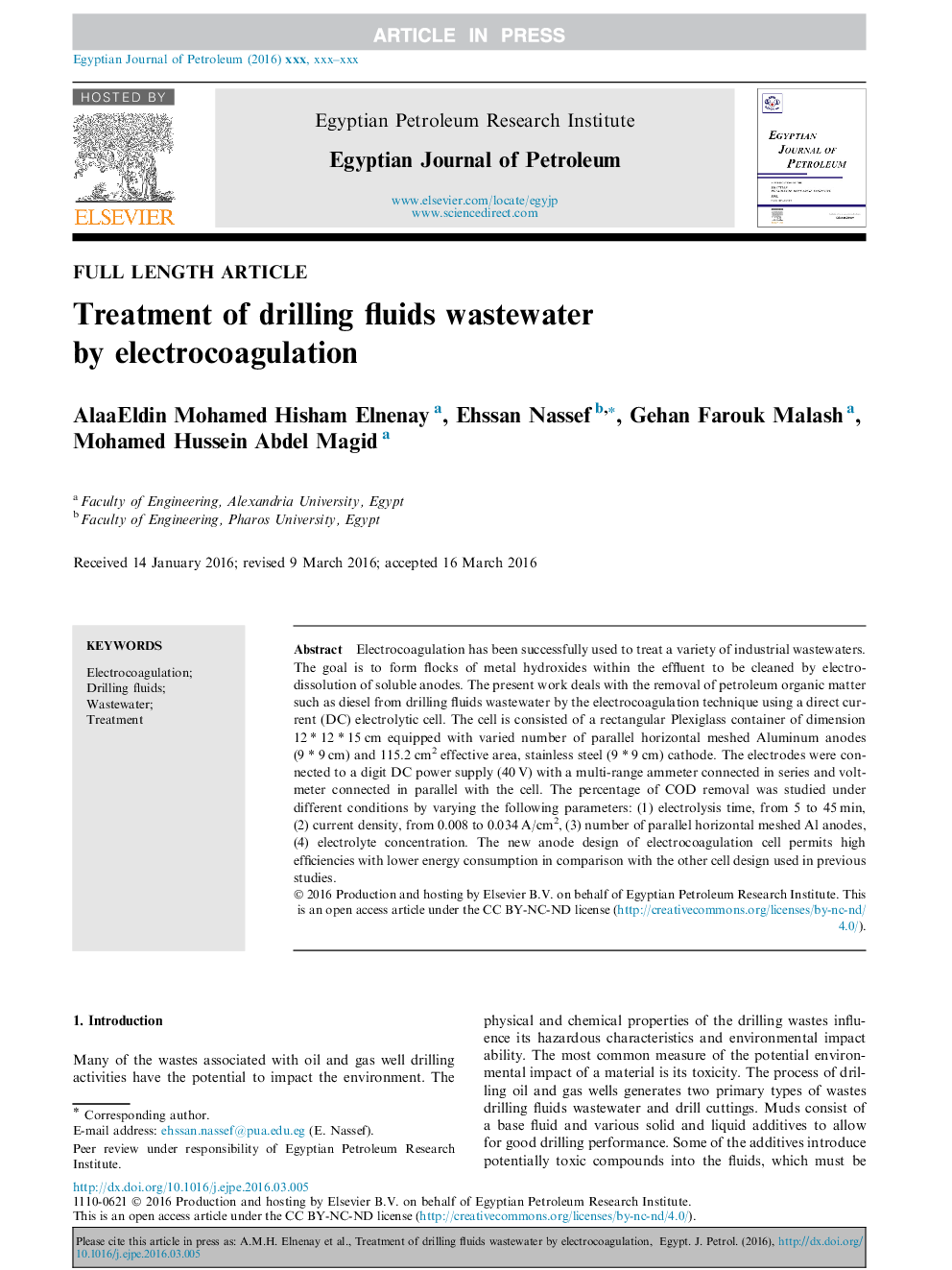| Article ID | Journal | Published Year | Pages | File Type |
|---|---|---|---|---|
| 5484644 | Egyptian Journal of Petroleum | 2017 | 6 Pages |
Abstract
Electrocoagulation has been successfully used to treat a variety of industrial wastewaters. The goal is to form flocks of metal hydroxides within the effluent to be cleaned by electro-dissolution of soluble anodes. The present work deals with the removal of petroleum organic matter such as diesel from drilling fluids wastewater by the electrocoagulation technique using a direct current (DC) electrolytic cell. The cell is consisted of a rectangular Plexiglass container of dimension 12Â *Â 12Â *Â 15Â cm equipped with varied number of parallel horizontal meshed Aluminum anodes (9Â *Â 9Â cm) and 115.2Â cm2 effective area, stainless steel (9Â *Â 9Â cm) cathode. The electrodes were connected to a digit DC power supply (40Â V) with a multi-range ammeter connected in series and voltmeter connected in parallel with the cell. The percentage of COD removal was studied under different conditions by varying the following parameters: (1) electrolysis time, from 5 to 45Â min, (2) current density, from 0.008 to 0.034Â A/cm2, (3) number of parallel horizontal meshed Al anodes, (4) electrolyte concentration. The new anode design of electrocoagulation cell permits high efficiencies with lower energy consumption in comparison with the other cell design used in previous studies.
Related Topics
Physical Sciences and Engineering
Energy
Energy (General)
Authors
AlaaEldin Mohamed Hisham Elnenay, Ehssan Nassef, Gehan Farouk Malash, Mohamed Hussein Abdel Magid,
